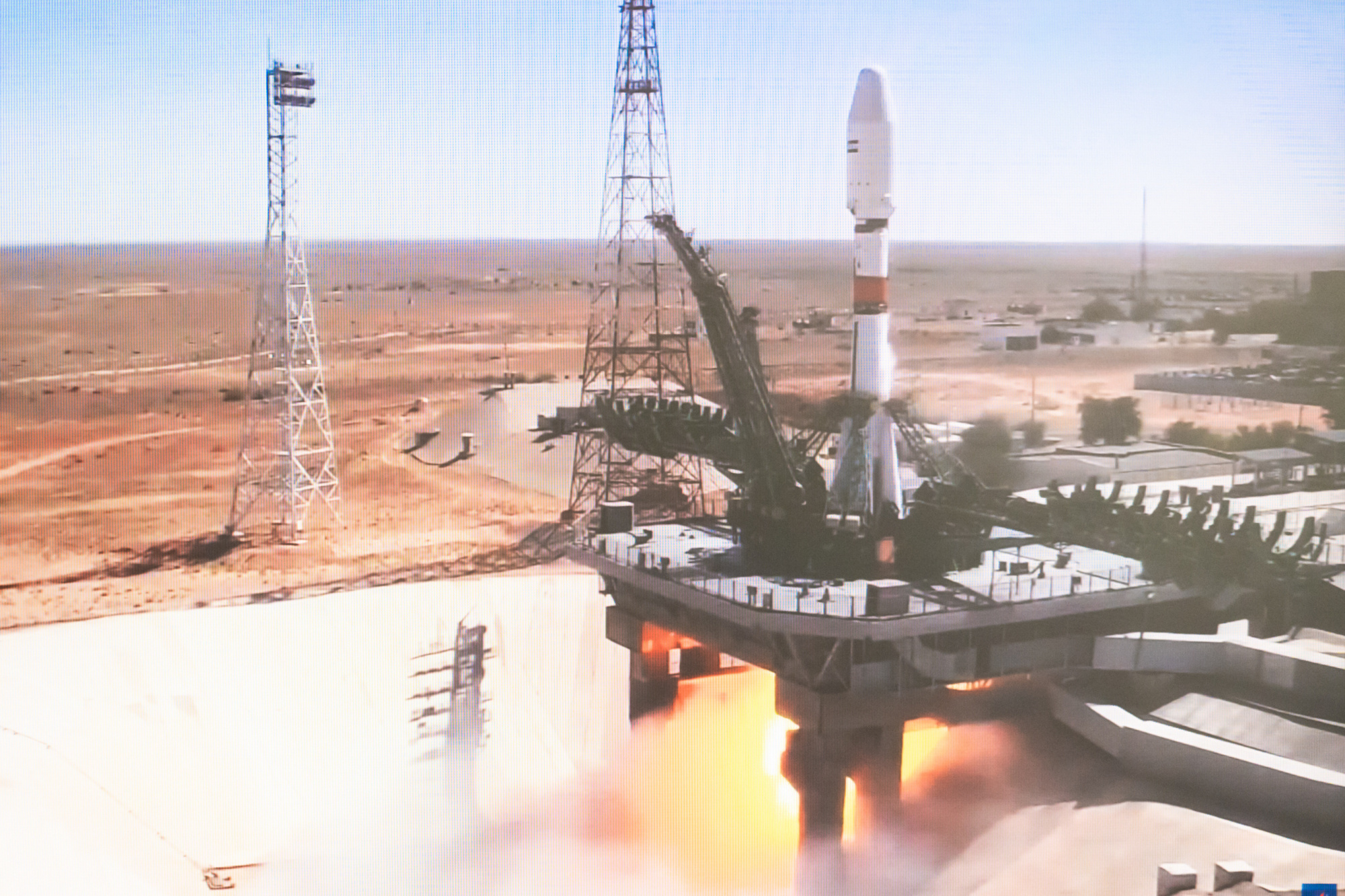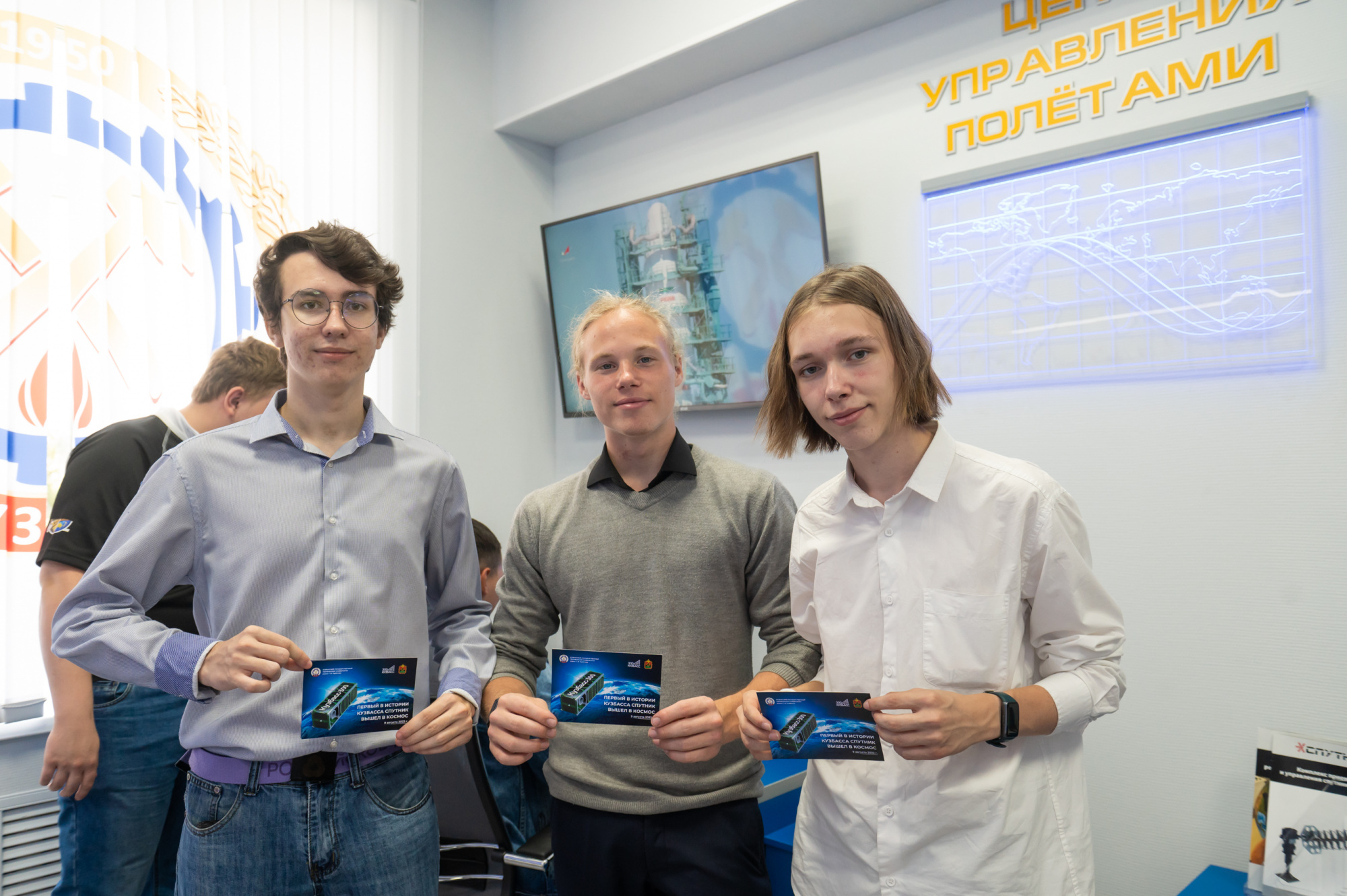
- Kuzbass
- University
- Education
- Science and Innovation
- Life at KuzSTU
- Kuzbass-300 Satellite

On August 9, 2022, Kuzbass-300 satellite went into outer space from the Baikonur Cosmodrome. The historical event was broadcast online - interested schoolchildren and students watched it on the screens of the Kuzbass State Technical University.
The creation and launch of the satellite were timed to coincide with the celebration of the 300th anniversary of Kuzbass. Kemerovo schoolchildren, students and scientists of the KuzSTU were involved in the development of the spacecraft. All work was carried out on the OrbiCraft-Pro SXC3 satellite platform in CubeSat format of SPUTNIX company and became part of the Space-PI scientific and educational project with financial support from the Innovation Promotion Foundation.
The satellite with a size of 340x100x100 mm and a weight of 4 kg can operate in the temperature range from -100 to +150 °C with a radio channel frequency of 435 MHz. The satellite is equipped with 14 solar panels, a rechargeable battery, a camera and a positioning system with an accuracy of one degree. The payload of the satellite will allow for observation, research and monitoring of changes occurring on the surface of the planet. The satellite will promptly transmit all data to the Earth. Its call sign is RS34S.
The media files are the main feature of the satellite which define its homeland, as the satellite will be able to transmit them to radio amateurs from all over the planet - voice messages, greeting cards on the 300th anniversary of Kuzbass, photographs of the region, as well as the first space advertisement inviting all the inhabitants of the Earth to Kuzbass, to the annual international festival "Night of Yuri Gagarin". All the data will be encrypted with a digital code. Detailed instructions on how to receive a satellite signal and decrypt the data are available on a special page https://kuzstu.ru/kuzbass300.
The Kuzbass-300 satellite signal can also be received at KuzSTU, at the Mission Control Center. A specific task has already been identified. Pupils of the Center for Children's Scientific and Engineering Creativity "UnikUm" at KuzSTU established with the full support of the Andrey Melnichenko Foundation will perform the remote sensing of the Earth as part of environmental monitoring of the territory of Kuzbass and beyond.
The Mission Control Center operates a space communications complex that allows you to communicate with small aircrafts, not only our satellite, but also with the others that will fly in our visibility zone and it will be required to establish contact with them. Since our Center is part of a large network of Russian Mission Control Centers, we may receive a request from other MCCs, for example, to receive the data they need. In addition, everyone will be able to participate in communication sessions with the satellite, it will be possible to contact it once a day, - said Vladislav Nemov, head of the Mission Control Center at KuzSTU, senior lecturer at the Institute of Energy.

|

|

|